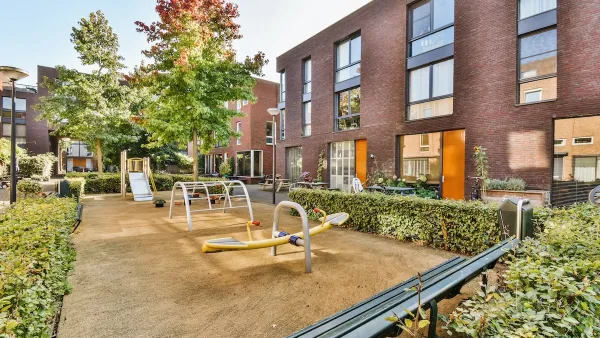A few weeks ago, I read an online comment suggesting that unnamed "planners" displayed no interest in suburbia, single-family housing or family life, and instead are only interested in improving downtown neighborhoods for single people. If by "planners" the author of this comment meant new urbanists or critics of the sprawl status quo, this claim is simply incorrect. Over the past month, I have visited half a dozen new urbanist developments in Dallas and Denver (1). All of these developments have a few things in common: all include both retail and residential uses, and all strive for walkability by providing sidewalks and narrow, gridded streets. But the developments differ in two other respects: geography and housing type.
A few weeks ago, I read an online comment suggesting that unnamed "planners" displayed no interest in suburbia, single-family housing or family life, and instead are only interested in improving downtown neighborhoods for single people. If by "planners" the author of this comment meant new urbanists or critics of the sprawl status quo, this claim is simply incorrect.
Over the past month, I have visited half a dozen new urbanist developments in Dallas and Denver (1). All of these developments have a few things in common: all include both retail and residential uses, and all strive for walkability by providing sidewalks and narrow, gridded streets. But the developments differ in two other respects: geography and housing type.
Only one of the six developments (Victory Park in Dallas) is downtown; two others (Addison Circle and Eastside Village, in the Dallas suburbs of Addison and Plano respectively) are in suburbs far from downtown, and the other three were technically within city limits but not within walking distance of downtown (West Village and Mockingbird Station in Dallas, Stapleton in Denver). Thus, it is not correct to say that new urbanism is limited to downtown, any more than it would be correct to suggest that new urbanism is limited to suburbia. Rather, new urbanist development can and does occur in a wide variety of geographical settings.
Just as new urbanist projects are not limited to high-density urban settings, they are also not limited to singles-oriented multifamily dwellings. In particular, Stapleton appeared to me to be dominated by houses with front yards. Moreover, Stapleton certainly appeared quite child-friendly: Stapleton has more playground and park space than the other developments I saw, and I saw lots of children and young parents on a neighborhood tour. In fact, some Stapleton residents went out of their way to discuss how many children lived there. (2)
Of course, you shouldn't have to look at new urbanist developments to realize that a walkable neighborhood need not be a concrete jungle. The streetcar suburbs of the 1920s were dominated by houses with front yards, just like Stapleton. And even some urban settings are as family-oriented as any suburb; the Hasidic neighborhoods of Brooklyn have larger families than most suburbs. In sum, both new and old urbanism are quite capable of accommodating families.
(1) I realize that not everyone agrees what constitutes new urbanism; however, I assume for the purposes of this article that the neighborhoods listed at http://www.tndtownpaper.com/neighborhoods.htm pass the test.
(2) See for example these videos: http://www.youtube.com/watch?v=fqui0DGmFls and

Analysis: Cybertruck Fatality Rate Far Exceeds That of Ford Pinto
The Tesla Cybertruck was recalled seven times last year.

National Parks Layoffs Will Cause Communities to Lose Billions
Thousands of essential park workers were laid off this week, just before the busy spring break season.

Retro-silient?: America’s First “Eco-burb,” The Woodlands Turns 50
A master-planned community north of Houston offers lessons on green infrastructure and resilient design, but falls short of its founder’s lofty affordability and walkability goals.

Test News Post 1
This is a summary

Analysis: Cybertruck Fatality Rate Far Exceeds That of Ford Pinto
The Tesla Cybertruck was recalled seven times last year.

Test News Headline 46
Test for the image on the front page.
Urban Design for Planners 1: Software Tools
This six-course series explores essential urban design concepts using open source software and equips planners with the tools they need to participate fully in the urban design process.
Planning for Universal Design
Learn the tools for implementing Universal Design in planning regulations.
EMC Planning Group, Inc.
Planetizen
Planetizen
Mpact (formerly Rail~Volution)
Great Falls Development Authority, Inc.
HUDs Office of Policy Development and Research
NYU Wagner Graduate School of Public Service




























